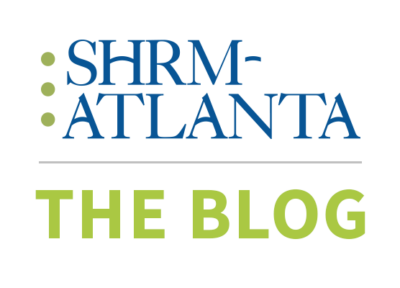A few weeks ago, I planned to take PTO after a really long time. This PTO however was going to be special. Among other “productive” things, plan was to invest time on projects or skills that have challenged me the most. (I do this occasionally – Push myself to do things that I am generally not good at or consider extremely challenging).
On very first day on my PTO, I receive the book I had ordered. Could not have asked for a better start. Just 50 Pages into the book got me into introspection mode. And in a way, led to me writing (well, typing) this article.
Next thing I did was read the Motorcycle Rides Manual and give the test at the local Department of Driver Services (DDS). Took a few hours to go through the manual on Monday and headed straight to the DDS couple of hours later only to find that the DDS was closed on Mondays. Odd but true. Possibly due to Pandemic related restrictions.
Headed back home and dived back into the book. Tuesday, morning, like a child waiting to get their first puppy, headed straight to the DDS gave the test and voila, “I Passed!”. Next step was to get on a bike and prepare for the on-road test. Called over 20 numbers for rider schools, and guess what, all of them have been booked till mid-July. Summers in Atlanta can be hot, but they are also encouraging for Jeepers to take the top off, kayakers to hit the beautiful lakes, and motorcycle enthusiasts to get on the saddle and taste the wind. Long story short, this won’t happen over this PTO.
Moving on to the next challenge and the center piece of this article, our landscaping project. My wife and my best friend loved the challenge explained to them and quickly jumped in to join me into the endeavor. Problem statement was to repair the side yard. Sounds plain simple, may be boring, but you will see how interesting it really gets, especially since I am going to relate it to the Human Resources Business Partner (HRBP) role.
Having started and spent most of my career in HR as a Human Resources Business Partner or HRBP as popularly referred, I have a certain affiliation towards the role. Professionally I also think that the HRBP role is one of the most strategic roles in the realm of Human Resources. I thought of connecting my experience from a landscaping project to some of the key elements that make the HRBP role so strategically important to organizations.
Before I began writing this part of the article, I reviewed over 50 Job Descriptions for open HRBP job positions. Reviewed the Job Descriptions and wanted picked out the most common responsibilities, skills and qualifications that were also relatable to my experience from the landscaping project. The primary goal of revieing actual Job Descriptions was also to ensure that I stay relevant with what is really asked of an HRBP in the industry and not just go with the textbook definition of the role.
Here are the Key Responsibilities we will be talking about through this article
- Identifying Issues Clearly
- Helping Scale-up Teams
- Partnering with Stakeholders
- Using Data and Metrics
- Be Ambassadors of Company Culture
Let us walk through those key aspects from the HR Business Partners’ role.
Key Responsibility: Identifying Issues Clearly
Our side yard as you see in the picture was not in the best shape. It was not so bad for now, since it only gave trouble when it rained, and the water flooded blocking the passage. Most importantly, this would have been a major problem in the longer term with the soil drifting down and creating a large ditch. It obviously looked hideous. But looks were the least of it, the real problem lied in the layers, below the surface. There was no gravel base and worse, there were wires and pipes that would lead to terrible damaged if not protected carefully.
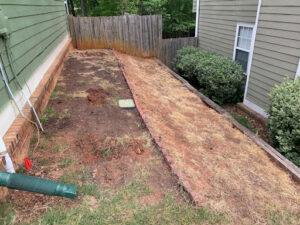
As an HRBP, one of your key responsibilities is identifying people issues clearly and anticipating risks as accurately as you can. Identifying people issues is never a one-step process. It is essentially an outcome of several days, months or years spent learning about the organization and its people in general. Interacting with people through weekly or monthly meetings depending on the size of your teams, interacting with line managers regularly, interacting with Leadership team, understanding current business situation, and referring from business results, analyzing people related data (attrition, diversity, tenure, engagement scores, etc.) are few avenues to learn about the organization and its people.
Bottomline – Every HRBP must be as close to their people and their business to be able to effectively identify issues, anticipate risks and propose the most fitting solutions.
Key Responsibilities: Helping Scale-up Teams and Partnering with Stakeholders
You get deeper into the project only to realize it is a complex assignment that is going to ask for help, support, basically a team. The scope of work required me to hire my wife and my best friend. We also had to depend on our local hardware store and the people there for assistance.
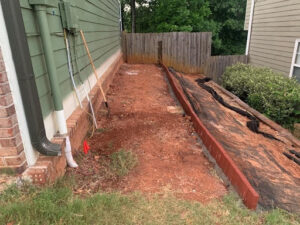

The first step in scaling up the people strength (number of people) of your organization is hiring talent. As a HRBP, we often have to partner with the Talent Acquisition teams. An HRBP can help design the onboarding process to better the onboarding experience for new team members and help assimilate the new hires smoothly within the organization. An efficient onboarding process also enables the system to grow and expand with minimal effort.
Scaling-up teams also involves setting up processes, designing policies and systems to automate. Getting involved in restructuring business units, managing performance management, creating clear career paths and succession planning are some additional key responsibilities that an HRBP has to undertake towards scaling-up of the organization.
As a HRBP you will be also be leading several strategic people initiatives in partnership with individuals, teams, departments withing as well as outside the organization. You are going to partner with your Diversity & Inclusion team (or be the team if you don’t have a separate team) while creating DEI programs, Legal team while handling sensitive issues, technology implementation teams or vendors automating your systems, Marketing & Branding teams to create and develop the organization’s brand, among others.
Being inline and at pace with the industry trends is another critical element while scaling-up. To stay abreast of trend changes, it is essential for an HRBP to build and maintain professional external network. This can be done by being part of professional HR networks, volunteering in HR, subscribing to HR magazines, following social media channels and all other avenues available to you.
Key Responsibility: Using Data and Metrics
We estimated 94 tiles for the border and ended up using 94. Our estimate was 100% accurate in this case. We did buy 6 more tiles as a buffer to cover for breaks or tolerance. Estimating the exact number of tiles was not difficult at all. It was basically a simple mathematical calculation – the border was 23.5 feet (that’s 282 inches), 1 tile was 3 inches long, that meant we needed 282 / 3 = 94 tiles. Simple!
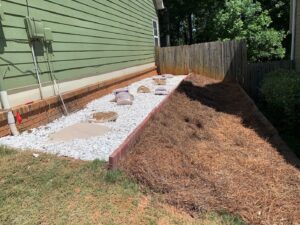
Management thinker Peter Drucker has said “What gets measured gets managed.” The corollary is that you cannot manage something that cannot be measured. Data and metrics play an extremely critically part in the insights an HRBP can provide the leadership. You translate date into actions. Data also helps identify trends and build correlations between people factors and business outcomes. These insights then help drive important business decisions. You assess and interpret leadership effectiveness and performance data and provide insights, guidance and recommendations based on findings.
For example: The attrition rate can feed into the hiring targets.
Key Responsibility: Be Ambassadors of Company Culture
Finally, the idea comes to fruition. The concept becomes reality. The design turns into something beautiful. Most importantly, you have learned a new skill, and this will change the way you approach so many problems going ahead.
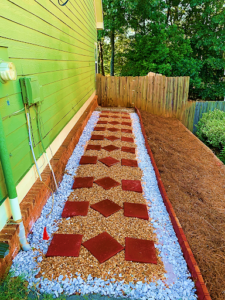
As a Human Resources Business Partner, you are also in charge of Organizational Design. You have to contribute to designing a holistic organizational plan for your business unit. You partner with business teams to understand the roles of tomorrow and work on planning, transforming, and integrating current roles align with the needs of tomorrow.
You partner and consult with peers and the implementation of data-driven plans for change. You evaluate internal and external business drivers, environmental factors, risks and benefits to foster change adoption, and collaborate to develop change management strategies and training materials.
You identify where change is needed and contribute to the development of interventions to improve leadership and team performance. You facilitate leadership capability planning for an organization and execute on strategies and action plans to transform leaders and teams.
Systematically and steadily what you are doing is paving and reinforcing the tiles towards building and reinforcing a healthy and sustainable work culture.
What we have witnessed in the last 12-18 months has, is and will transform the way we operate in so many ways. This market disruption requires the HRBP to be at the top of their craft much more than ever before.
I hope you found this article useful.
About the author:

Tushar Kad is the Director of Human Resources and Learning & Development at Simeio (an Atlanta based information security company). He has one of the most unique profiles in Human Resources with a blend of technical/functional, business and HR acumen only supplemented by his Bachelor’s in Information Technology and Master of Business Administration. Tushar has extensive experience and expertise in policy designing for global organizations. What makes his profile rarer in the field of Human Resources is his global experience of having worked with teams in multiple geographies like India, Mexico, Canada, UK, Netherlands, and the USA.
